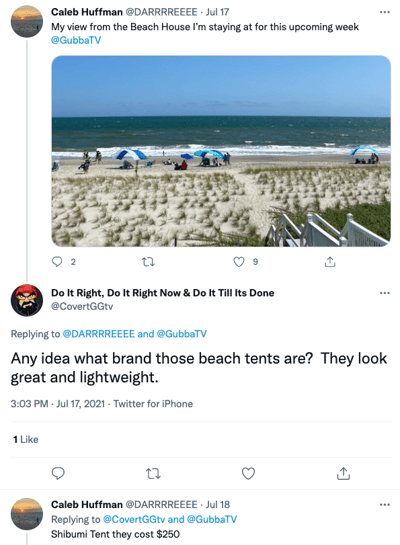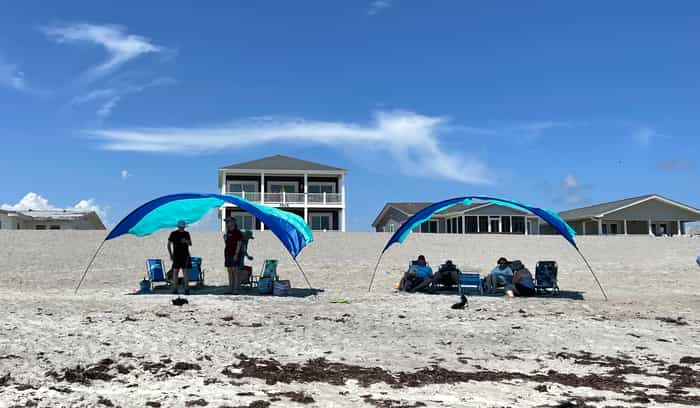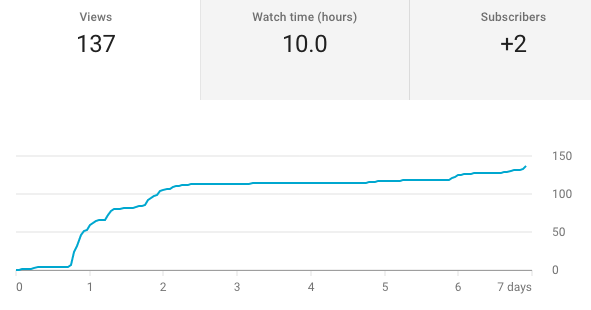Our family went to the beach last week. As is tradition if you're from North Carolina, we’ve been going to the NC coast every summer for years. We missed the annual trip in 2020 for obvious reasons, so this year was our first trip back since 2019.
While most things were about the same as they were two years ago, there was one major difference this year: almost everyone on the beach had the exact same blue and aqua beach canopy.

That beach canopy, pictured just above, turned out to be The Shibumi Shade. If your parents are from North Carolina, they probably saw that it was recently featured in Our State magazine. But it’s not just Our State magazine - even TikTok is “obsessed” with this canopy.
Seriously, this shade was everywhere in Oak Island. At least two-thirds of the people on our beach had one. (See above.)
It’s a nice-looking canopy, sure. But it’s $250! That’s not exactly cheap, especially for something you can really only use at the beach - it requires a constant breeze, which most of us don’t have at home. Other shades, like pop-up canopies, come in handy at home or camping, and can cost less than $100.
So how did a $250 beach shade you use once a year get so much traction? Good old fashioned viral marketing!
Viral marketing isn't limited to social media
After more than a decade in the social media marketing space, I almost can’t use the phrase “viral marketing” with a straight face - it got so overused in the 2010s that it became mostly meaningless. Everyone wanted their social campaign to take off (“Hey, can you make this campaign go viral?”). Social media managers, you know what I mean.
But the Shibumi Shade is a great example of what viral marketing can and should be. And it’s not just contained to social or even digital media - this is viral marketing happening in real life. The Shibumi Shade had more than just good word of mouth and targeted PR. It hit on a viral element its inventors probably didn't even think about when designing it.
What does a virus need to thrive and spread? It needs the right conditions to thrive, it needs to be easily transmissible, and it needs to replicate quickly. The same goes for a product or campaign.
First, the conditions have to enable the virus to thrive. The timing needs to be right, and the environment needs to be hospitable. We know that more people are taking vacations this year. We also know people are spending more money on vacation this year. That’s good timing for the Shibumi folks, who launched their product in 2016, and have more recently scaled up to be able to support the huge increase in business.
Next, the virus needs to be contagious, easily transmissible. Shibumi has done a few very smart things that help encourage virality.
First, when you get a new shade, it comes with a cute little envelope full of business cards you can hand out to people who ask you about your shade. And people will ask.

Two, the shade has a very distinctive and unique look, which make it hard to miss. Everyone on the beach had one of these shades. We noticed it right away - the first time we looked out at the beach, we saw them. In fact, at first I assumed there was a rental company setting these canopies up for beachgoers. And it seemed like every day more people had swapped their old non-Shibumi canopies for a new Shibumi.
The Shibumi is only sold in one color, so it’s obvious to anyone looking at it what it is. That’s clever - if they made multiple colors or styles, it might not be as recognizable. People wouldn’t feel like they’re missing out on something literally everyone else has.
Finally, a virus needs to replicate quickly. In the case of a beach canopy, it has to be easily accessible. You can buy these shades at local beach shops and online, so they’re easy to get before you leave on vacation, or once you’re already there and regretting life without one.
It also helps that these canopies solve a very real pain for beachgoers. Traditional beach canopies are a challenge to put up. They’re heavy and unwieldy, and take 10-15 minutes to set up. You have to drag them onto the beach every morning and off the beach every night. Umbrellas are simpler, but don’t provide a lot of shade. The Shibumi is supposed to be lightweight and takes only a couple minutes to set up.
And I can vouch for this - after a few days of setting up our old difficult canopy, we started to really want one of these.
So, did it work?
According to Sprout Social, a campaign needs to be organic, timely, and bold to be a viral success. The Shibumi Shade hit all three of those criteria. This isn't a paid campaign from the company's marketing department; it's just people using the product in a visible way. It happened at the right time, as people started venturing back out on vacations. And the shade is bold - it's unique in both its design and color. Check, check, check.
More specifically, did it work on us? Well, by the end of the trip, we had one too (that's ours on the left below). And yes, it was lightweight and easy to set up.

It's nearly impossible to manufacture a viral success like this, but if you can be thoughtful about the conditions you're selling into, the ways your product can spread from customer to customer, and the ease of access, you're on the right track.




